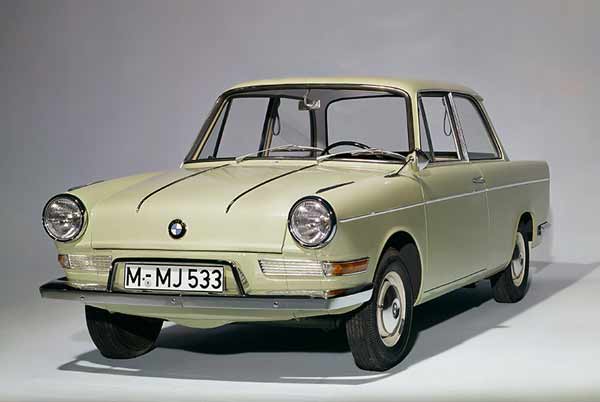A Mobile Tradition
An invitation to visit BMW Group Classic to drive a 507 arrived in my inbox back in 2010 – that’s not something you turn down. The following was my report on that experience.
BMW Group Classic, formerly known as Mobile Tradition, resides in an unassuming four storey building in leafy, downtown Munich. Exiting the taxi in front of a glazed display cage jutting out from the second floor, a glass base affords an intriguing upskirt shot of an Isetta and an M1 Procar – both a subtle nod to the automotive jewels within. That modern metal and glass showcase, at odds with the traditional red roof and white wall architecture, covers the entrance to a building stuffed to its chimneys with blue and white propeller treasure.

Above: The little Isetta is a world away from BMW’s sporty driving ethos, but it never fails to induce a smile.
I’m introduced to the impeccably suave Carl Szenthe. In charming, German-accented English he tells the Bayerische Motoren Werke story. It starts as it should, with an Austin, and moves through a succession of ever more sporting saloons, spattered here and there with genuine sports car genius – 328, 507 and M1, as BMW gradually defined a formula that would bring it enduring success. As Carl expertly recalls the history of each model, he’s also quick to point out the journey wasn’t always easy. While the 507 worked wonders for BMW’s image, a favourite of many high-flying celebrities, development and production costs were exorbitant. Even at the princely sum of DM 26,500, every 507 sold poured yet more red ink onto a financially crippled BMW. It took a 700cc, rear-engined sedan sans double kidney grille to save them. The 700 series was that car. Its popularity dragged BMW through the crisis in 1959 and on to profitable large-scale production.

Above: It’s not much to look at today, but the 700 still commands respect.
Half an hour later, I’ve taken in another 30 years of BMW road and racing car genius. But, brilliant as they are, it’s not the 3.0CSL Batmobiles, the M1 Procars, the BMW-powered McLaren F1s, or even the crazy line-up of concept cars that excite me as much as the opportunity to head outside and drive a BMW legend – the 507.


Tentatively, I open the door. It swings without the complication of a damped modern hinge but still shuts with a precise thud. With the fabric hood on roof duty, thanks to imminent rain, the cabin feels slightly cramped. The proximity of the upright screen and the tiny side windows don’t help, but slim seats and a sparsely populated dashboard compensate. An anaemic white steering wheel and an all-black metal dash, punctuated by six ivory-hued switches that have long since ceased to advertise their job description. I fiddle around under the seat for a lever, and slide it forward. Everything else is super nick, and even though I realise BMW have more precious 507s squirreled away, and that this one is driven regularly, I wind down the windows and nudge the indicator’s spindly stalk as gently as playing baseball with a porcelain bat.
A prod on the accelerator to lift the revs in stall prevention and I ease off the light clutch and point the 507 into Munich traffic. The V8 engine’s throb, a heady mix of Harley Davidson at idle and Wagner on cam, pulses through the tight cabin. I ask myself ‘Has there ever been a better mid-range soundtrack on Munich's streets?’ Second gear slots home easily and the torque is instantly apparent. Finding third is trickier as the gate on the four-speeder is far wider than a modern six-speed ‘box. Typically old school brakes require more heft than deft. Two corners in, the indicators’ fuse blows.. Somehow sticking your arm out the window in a 507 just looks less daft. As it turns out, taking gaps is easy, as modern 3 Series sedans make way in quiet, patient reverence.

Above: The display 507, the one they don’t let you drive.
Out on the autobahn, the 507 just beats me in the race to settle down. Heavy low-speed manoeuvring aside, it’s just about as easy to drive as a modern BMW. Early worries over crashing this rare treasure ease as the lush German countryside flashes by. With it comes a great sense of occasion, heightened by the upright screen. I watch the clouds caress Albrecht Goertz’s beautifully sculpted bonnet and ask myself: which current car even affords you a view of the bonnet?
You sit frighteningly close to the dashboard, and without the reassurance of seat belts either. Later on, as a passenger I’d make frequent use of the forward grab handle, despite the realisation that it wasn’t going to be much help in an emergency. Clearly, 1950s society did not have the same fixation on death and little (NCAP) stars. This was absolutely, motoring in a different age.
By Wayne Batty
Leave a comment